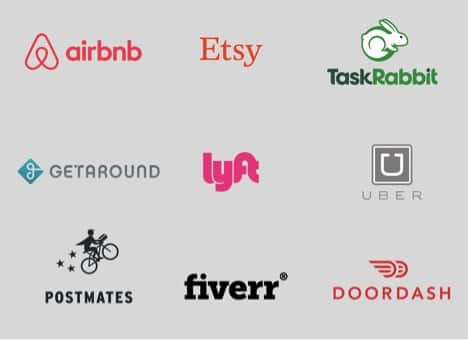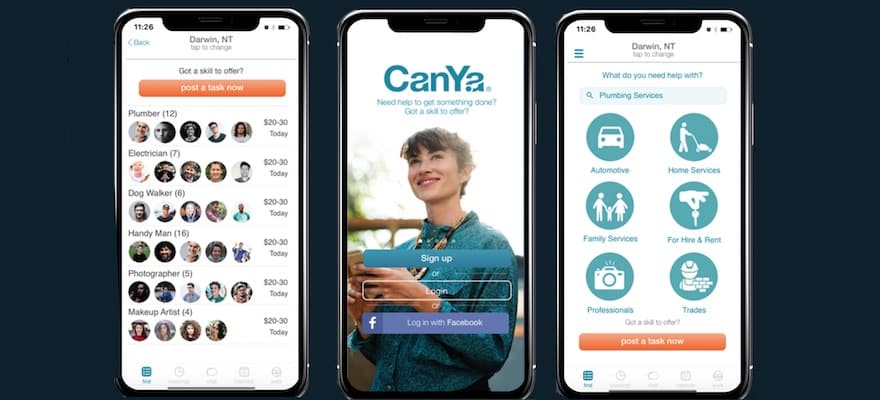Estimates say the freelance economy is adding $715 billion annually to the larger U.S. economy. Also termed the gig economy, independent workers are projected to make up 43% of the workforce by the year 2020. With jobs ranging from peer-to-peer (P2P) home sharing gigs to handymen for hire, there is a wide variety of jobs available.
One development that has driven gig economy revenues through the roof is the internet. Nowadays, gig economy workers are found almost exclusively through online mediums, whether apps, websites, or internet based platforms.
What is the gig economy?
Almost all of the top gig economy jobs are related to the sharing economy. Names like Lyft, Uber, and Airbnb dominate the headlines. Freelance writers can get their start from websites like Upwork, Freelancer, and Problogger, while more crafty workers can sell their products on Etsy. Each of these platforms has something in common--they are all based online.
By using the internet as a medium of exchange, clients and providers can connect like they never have before. Now, couples can go on a romantic getaway to sunny California and book their beachfront apartment from anywhere in the world. Freelancers can write from India for a publishing firm in the U.S., and Etsy products can be shipped to a myriad of distant places. For this booming gig economy, the world is the limit, and the possibilities are endless.
However, the gig economy is just getting started. Blockchain technology, a relatively new development, has been revolutionizing almost every industry it touches, and the gig economy is no different. There are some Blockchain based companies like CanYa that are looking to disrupt the status quo. Their proprietary platform allows service providers and clients to interact directly, solving some of the major issues with the current gig economy, and cryptocurrencies, at the same time.

Times are Good But They Could Be Better
As discussed before, a large majority of the gig economy happens through online platforms. As a result, there is typically a large corporation running the show behind the scenes. These entities operate as third party mediators between service providers and clients--service providers provide the service directly to a client, but the medium of exchange is actually the corporation.
There is no way to get an Uber or Lyft ride without using Uber or Lyft. It is impossible to rent a room through Airbnb without using Airbnb. This is the way the platforms are structured.

Unfortunately, this isn’t good for service providers or for clients. With ride sharing giants Uber and Lyft for example, the advertised commission is 25%. However, the actual cut is sometimes much higher.
For example, in populous areas like San Francisco, companies can take up to as much as 42.5% from drivers’ earnings. Additionally, though this means lower fares for riders, other costs disguised as booking fees, which increases Uber’s cut but ends up raising prices in the end.
The problem isn’t with the providers or the clients--the problem is in the way the platforms are structured. CanYa’s platform, a peer-to-peer service provider marketplace, runs through a decentralized blockchain. What this means is that there is no centralized third party mediating between service providers and clients.
The platform charges a minimal 1% transaction fee, which pales in comparison to other peer-to-peer marketplaces. Prices are lower for clients and the payout is better for service providers. It’s a win-win for all parties involved. Best of all, there is direct communication between providers and clients – no puppet master corporation is working behind the scenes.

Another benefit of CanYa’s decentralized platform is its payment system. First and foremost, CanYaCoins are subject to a hedging mechanism, through which a transaction retains its value regardless of cryptocurrency value shifts. This prevents coin volatility from wreaking havoc on unsuspecting freelancers, who had expected to receive a larger compensation for completing a task, only to find out its been reduced to a rubble due to value changes.
Secondly, by conducting payment through CanYa’s crypto coin, CanYaCoin, clients are able to pay service providers anytime, anywhere. This means local services like window washing or housecleaning are paid with cryptocurrencies, but so are potentially international jobs like accounting, consulting, or computer programming. In an environment where international and cross-border Payments are full of problems, cryptocurrency based payments make transacting business much easier for service providers and clients alike.
CanYa is having its ICO near the end of November. The sale will run a full month until December 26, 2017, or until all of its coins are sold. Those interested in participating must first join CanYa’s exclusive whitelist. Further details about the ICO can be found through CanYa’s website.











